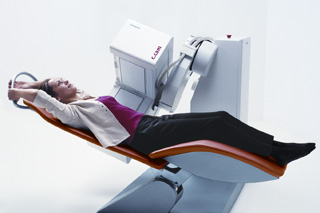1/1
c.camTM
Nuclear cardiac studies require the patient to remain motionless for up to 45 minutes in order to acquire a diagnostic image that is free of "motion artifacts." Previously, patients were required to lie down on a flat board, which was fed into a huge doughnut-shaped gantry. The c.cam provides a reclining chair for subjects and moves them gently into the imaging position. This feature greatly reduces movement, as a comfortable person is less likely to move. The open design also reduces patient claustrophobia and the extremely small footprint uses half the floor space of a conventional gamma camera.
发布于2020-02-14
设计奖项
美国IDEA工业设计奖
Silver/银奖
2004 年
颜色

